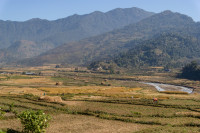Columns
Towards demand-led growth
Nepal's plans and programmes focus more on easing the supply side. This must be corrected.
Vidyadhar Mallik
On October 7 last year, the Government of Nepal formed a high-level recommendation body headed by former Finance Secretary Rameshore Khanal to seek long-term cures for ailments in the country’s economy. This came after Prime Minister KP Sharma Oli expressed concerns about slackness in the economy and representations by private sector apex bodies like the Federation of Nepalese Chambers of Commerce and Industry, Confederation of Nepalese Industries and Nepal Chamber of Commerce for economic reforms that could bolster consumers’ demand to accelerate investment and growth.
The 16th Five Year Plan has targeted 7.3 percent economic growth against a mere 2.6 percent growth in the 15th plan. However, the market has not shown any sign of confidence, be it from a consumer or an investor. Producers are not excited to produce goods and services for mere stockpiling. There are only a few positive signs, such as a huge increment in foreign currency reserves ($16.8 billion) and a surplus in the balance of payments of Rs225 billion. The inflation rate of 6 percent (year-on-year basis) is moderate and the inter-bank interest rate is below 3 percent, while the lending rate for commercial credit is below the single-digit threshold.
But if we read the market’s mood, despite the low interest rate, there are signs of sluggishness and an unwillingness to invest and to buy non-essentials like electronics or non-food consumables. The real estate market is collapsing; the share market is devoid of any fresh growth; the construction business is slow, and, above all, people—the mass consumers—generally lack either adequate disposable funds for purchasing non-essential items in the local market or are not buying because they feel insecure about their future or believe the market is distorted. In the first five months of the current fiscal year, merchandise imports slowed to 3 percent, and both retail and wholesale trade and service sectors, except tourism, have gone down. The revenue from the construction sector has decreased compared to last year.
Why is this happening?
Aside from the 14th three-year plan, Nepal has never achieved its planned targets in the last 30 years. The government’s plans and programmes focus on easing the supply side and prioritising resource allocation in the infrastructure sector. It has played the role of a provider rather than an enabler for the private sector and market socialism to thrive. The allocation of resources for the human development sector, such as education, health and rural employment, has always been low. Moreover, the selection of projects and plans is generally based on the decisions of politicians and bureaucrats rather than on the people’s demands.
This has led to the oversupply of financial products (like excess liquid funds in the banking sector despite low interest rates) and non-financial products (such as housing units or oversupplied merchandise and services), while demand has stagnated or declined. Market signals of high prices, poor quality, or unmatched product choices have led to a decline in demand. The demand has also slowed because of consumers’ concerns about their social security, low employment levels and low disposable income in the hands of poor citizens. It is more the remittance that has maintained a level of consumption in the country than the wage income.
In supply-side economics, the buyer or consumer matters less than the manufacturer or the seller. Users’ choices or demands matter less than building infrastructure, such as roads or airports. Procuring medical equipment is regarded as more important than the demand for quality healthcare. Students’ learning achievements become less important than constructing a school building. Keeping low tax rates on investors’ income, such as dividends and capital gains (which attract lower rates of 2.5 percent to 10 percent), becomes more of a priority than lowering the tax burden on wage earners (currently facing a top rate of 39 percent).
A year ago, there was huge pressure on the Governor of Nepal Rastra Bank, Maha Prasad Adhikari, to cut interest rates and make borrowing cheaper. It has now come down to less than 7 percent, but still, there is no mood to borrow from the banks and invest. So, why has the share market not been able to uplift the mood of investors? Let us not forget that the interest rates on deposits, including fixed deposits, have decreased to the current inflation rate of 6 percent, thus reducing the income of general households and retirees. This factor has lowered the disposable income of consumers. There are many others, such as increased expenses for essentials like medical spending post-Covid and general unemployment or low-wage employment prevailing in the country.
In a market, all production factors need to be paid in a fair way so that the markets can thrive and the sellers can have buyers with cash who can purchase their products, including non-essential merchandise. Both profit and wage levels must be protected. The government should provide citizens with adequate social security to feel secure about their future and not shy away from present consumption.
Demand-led economic growth
Nepal needs plans, policies and a governance lens to correct supply-side economics and work on demand creation by putting cash into the consumer’s hands and furnishing adequate consumer credits at easy instalments and cheaper interest rates. Further, health insurance and old-age care should be strengthened for the economic security of consumers in the future. Domestic demand can’t be enhanced unless consumption is induced, so domestic consumption must be balanced with moderate domestic savings. Unless demand for consumables increases, production and investment can’t be enhanced.
The government must work towards citizen-centric governance, inclusive economic growth and job creation through self-employed or home-based jobs, especially in the IT sector. Resource allocation patterns should be restructured to focus on human development through quality education and health.
Another focus solicited here is community-led growth in rural and agricultural sectors. Community and demand-driven development are vital to alleviate poverty and mobilise social capital for economic growth. Market socialism and cooperatives can be helpful in both regulating the market and making it pro-poor.
The government should not interfere in the private sector’s resource allocation decisions through various tax incentive schemes or other sectoral investment promotion schemes. The tax policy should be reformed to support consumption by the poor and wage earners. Last but not least, the government should be turned into a minimalist government that does not interfere in household or community-level decisions related to their choices of business or social transactions.




 19.12°C Kathmandu
19.12°C Kathmandu















